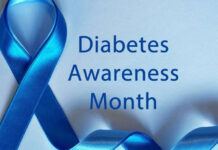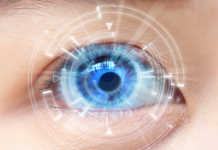
If you’re feeling down and uninspired right now, you’re not alone. The winter blues — including its most severe form, Seasonal Affective Disorder, or SAD — really is a thing.
According to Rush University Medical Center, about 14% of Americans get the winter blues, while 6% wrestle with full-blown SAD. The good news is, these are treatable conditions, once you know the basics.
Common symptoms
Many of us experience mood shifts during the long, dark days of winter, but if you’re experiencing the following symptoms over an extended period, it may be something more:
• You feel sluggish and can’t get going.
• You’ve lost interest in activities you usually enjoy.
• You prefer to hibernate instead of socialize.
• You’re overeating (carbs cravings, anyone?), or conversely, have lost interest in food.
• You’re not sleeping well.
• You feel hopeless or worthless.
Where’s the line between simply the winter blues and an all-out case of SAD? Often, it’s a matter of degree. With the winter blues, you can still function and go about your day. However, you may have SAD if:
• You’re unremittingly depressed or anxious.
• You’re having problems getting through your day.
• You’re abusing alcohol or other substances.
• You’re having suicidal thoughts.
In either case — but especially if symptoms are serious — seek professional help, starting with your primary care physician.
The cause: The seasonal shortage of sunlight
These are truly seasonal disorders. Science reveals that a lack of exposure to sunlight — in short supply during fall and winter — can wreak havoc on our biological clocks.
How it works: Sunlight triggers our brains to release serotonin, a powerful hormone that regulates mood. Less sunlight results in less serotonin and melatonin, which is key to a good night’s sleep.
The further you live from the equator, the greater the risk. For those of us in the Chicago area, where days are short but winter is long, the risk is real.
Finding treatment that works
Luckily, there are several successful treatment options, including:
• Light therapy — During light therapy, you sit in front of a special light box that mimics natural daylight. You can buy a light box without a prescription, but talk to your doctor first to learn what features to look for and how to use it.
• Exercise — Research shows exercise increases serotonin and endorphin production. Many doctors recommend exercising at least 30 minutes on most days.
• Cognitive Behavior Therapy — This effective form of psychotherapy helps people replace negative thoughts and behaviors with healthier habits.
• Medication — Some doctors prescribe antidepressants to regulate chemical imbalances caused by SAD. Never self-medicate; always consult your doctor.
If you don’t have the winter blues, give thanks — and practice good prevention by soaking up as much daylight as you can. When your schedule permits it, start the day with a crisp morning walk — or at least get outside and moving at lunchtime. Grab a friend, or your dog, or your friend’s dog.
And if you think you need help, ask for it. Don’t wait for this to go away – it’s a way off until spring.
Credit Daily Herald by Tery Dreher, RN
Teri Dreher is board-certified patient advocate. A critical care nurse for more than 30 years, she recently founded Seniors Alone Guardianship & Advocacy Services (SeniorsAlone.org), a nonprofit organization that serves the area’s senior orphans. She also is the founder of NShore Patient Advocates, www.northshorern.com.












